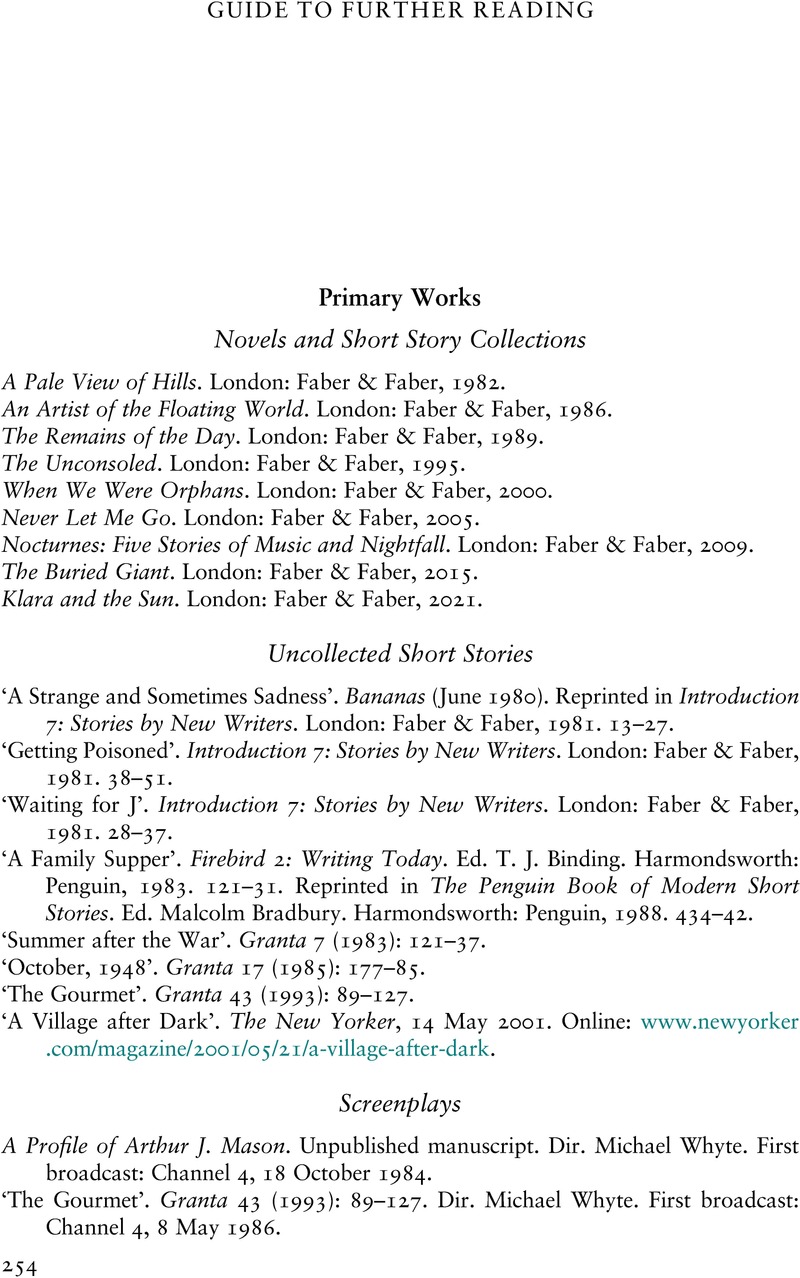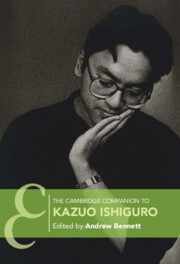Book contents
- The Cambridge Companion to Kazuo Ishiguro
- The Cambridge Companion to Kazuo Ishiguro
- Copyright page
- Contents
- Figures
- Contributors
- Acknowledgements
- Chronology
- Abbreviations
- Introduction
- Part I Kazuo Ishiguro in the World
- Part II Literature, Music, and Film
- Part III Ethics, Affect, Agency, and Memory
- Guide to Further Reading
- Index
- Cambridge Companions To …
- References
Guide to Further Reading
Published online by Cambridge University Press: 16 March 2023
- The Cambridge Companion to Kazuo Ishiguro
- The Cambridge Companion to Kazuo Ishiguro
- Copyright page
- Contents
- Figures
- Contributors
- Acknowledgements
- Chronology
- Abbreviations
- Introduction
- Part I Kazuo Ishiguro in the World
- Part II Literature, Music, and Film
- Part III Ethics, Affect, Agency, and Memory
- Guide to Further Reading
- Index
- Cambridge Companions To …
- References
Summary

- Type
- Chapter
- Information
- The Cambridge Companion to Kazuo Ishiguro , pp. 254 - 259Publisher: Cambridge University PressPrint publication year: 2023



